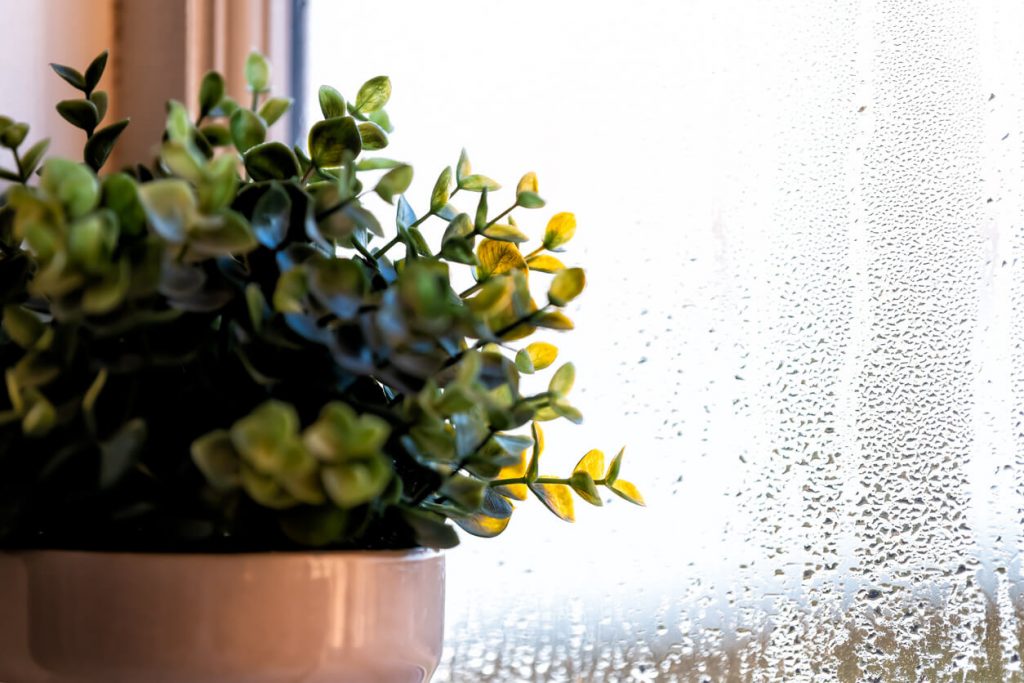How To Reduce Window Condensation In Your Home
Are the windows in your home misting up as if someone has just opened the door to a massive shower? Window condensation can be frustrating, but it’s not always a bad thing, it’s likely occurring due to your day-to-day life.
If you find yourself gazing out the window to admire a sunny day, only to have your view obstructed by condensation, you’ve come to the right place.
Keep reading to find out what causes window condensation and how to prevent it.
What Causes Window Condensation?
Interior condensation on windows in your home is caused by excessive moisture in the house. It’s very common in winter when warm air collides with cold air or cold surfaces.
Most of the blame for condensation on windows is on a lack of air circulation or too much humidity.
Exterior condensation on windows in your home is caused by outside temperature conditions. When the outside temperature is warmer and/or more humid than the temperature of your window glass, you will see condensation. This typically happens when the seasons change in the spring and fall. After a cool night with no breeze you will likely see condensation on the outside of your windows.
The good news is that exterior condensation on your windows is a good thing because it means that your windows are preventing heat transfer (AKA heat loss)!
How To Prevent Interior Condensation On Your Windows
Check out these helpful tips to keep your windows condensation-free all year round.
1. Check Your Window Seals
If condensation is building up on more than one window in your house, it’s unlikely to be a seal. However, if there are one or two double-glazed windows always misting up, the seal between the panes might be broken.
If this is the case, you can either replace the seal or use sealant to close it up. Upgrading your windows can help to solve condensation and a bunch of other issues.
2. Use Fans in Moisture-Prone Rooms
Bathrooms and kitchens are guilty of producing a lot of moisture from the shower and bath, and from cooking. Using fans in these rooms for about 15 minutes after cooking or showering will help to circulate air and encourage the moisture to escape from inside your house.
Installing extractor fans in the kitchen and bathroom is a great solution.
3. Increase Ventilation
When the weather allows for it, open some windows to improve ventilation, and allow air to move throughout your house.
4. Check Your House Plants
Certain house plants work to remove humidity in the air, and others do the opposite. You may have humidifying house plants that are contributing to excessive moisture. Remove these plants, or relocate them, and replace them with moisture extracting house plants, like Peace Lily, Boston Ferns, and English Ivy.
5. Change Your Home Habits
A lot of the moisture in your home can be decreased simply by changing some of your habits. For example:
- Ensure you have a large bath mat to prevent water soaked floors in the bathroom.
- Wipe down cold surfaces after a shower.
- Use pan lids when you’re cooking to prevent condensation.
- Keep bathroom doors closed after taking a shower so that the moisture doesn’t escape from your bathroom to the rest of your home.
Tackling Window Condensation
The last thing you want is perpetual window condensation causing damage to your home. Try to identify the main cause and start working to solve it. These tips are a great place to start!
If your problem isn’t getting any better, it might be time to think about upgrading the windows in your home. The expert team at Bavarian will find a solution for you, request a quote today.



